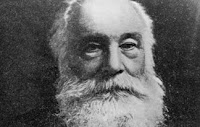I remember when things used to be so simple back in the past, I remember my childhood being so simple, and bright and carefree, I don’t know when we crossed that epoch into this new era of blood and violence, it seems so weird and painful sometimes.
I have stopped watching the news altogether, I believe that too much heartache makes one heartless, and I really don’t want to desensitize myself more than I have already become, every time it seems that I turn around there’s another bomb blast, another mass killing, another crime against humanity, and it’s not just that it happens in my country, it happens all over the world.
Sometimes it makes me believe what Agent Smith Said in the matrix
I wonder if the writer who created that monologue was thinking the same things I am thinking right now, honestly with all the things that I see happening around me, it makes we want to wish that the Mayan calander is right on cue and everything gets obliterated in a flash of light and sound and we start anew from the ashes or this farce ends outright.
We as a species are failing, progressing in technology is not the same as actually learning equilibrium among the species and harmony and co-existance. We have drawn such strict borders around ourselves that we have cut ourselves off from the rest of our species on basis of religion, ethnicity, color, geography.
All we do is take time to find differences within each other and make then the reason and the cause of strife and bloodshed and argument, I look around the world and I see systems of civilizations, monarchies failing, democracies failing, every man made system designed to facilitate the process of life is itself ultimately resulting in the frustration and destruction of life itself.
Where did it all go wrong, how did things change so much is such a short span of time, what is accelerating this process of hate and bias that’s leading toward the destruction of everything sanctified .
There are some troubling questions each and every one of us needs to ask ourselves, I believe in the collective mind of humanity, if each and every one of us starts thinking things then eventually we will start speaking, from thoughts to speech and speech to action, we may see something better emerge.
There are two directions, anger and destruction, for the entity and the collective, and harmony and coexistence, which will you choose in the future.
I have stopped watching the news altogether, I believe that too much heartache makes one heartless, and I really don’t want to desensitize myself more than I have already become, every time it seems that I turn around there’s another bomb blast, another mass killing, another crime against humanity, and it’s not just that it happens in my country, it happens all over the world.
Sometimes it makes me believe what Agent Smith Said in the matrix
I’d like to share a revelation that I’ve had during my time here. It came to me when I tried to classify your species and realized that humans are not actually mammals. Every mammal on this planet instinctively develops a natural equilibrium with the surrounding environment; but you humans do not. Instead you multiply, and multiply, until every resource is consumed. The only way for you to survive is to spread to another area. There is another organism on this planet that follows the same pattern… a virus. Human beings are a disease, a cancer on this plant, you are a plague.
I wonder if the writer who created that monologue was thinking the same things I am thinking right now, honestly with all the things that I see happening around me, it makes we want to wish that the Mayan calander is right on cue and everything gets obliterated in a flash of light and sound and we start anew from the ashes or this farce ends outright.
We as a species are failing, progressing in technology is not the same as actually learning equilibrium among the species and harmony and co-existance. We have drawn such strict borders around ourselves that we have cut ourselves off from the rest of our species on basis of religion, ethnicity, color, geography.
All we do is take time to find differences within each other and make then the reason and the cause of strife and bloodshed and argument, I look around the world and I see systems of civilizations, monarchies failing, democracies failing, every man made system designed to facilitate the process of life is itself ultimately resulting in the frustration and destruction of life itself.
Where did it all go wrong, how did things change so much is such a short span of time, what is accelerating this process of hate and bias that’s leading toward the destruction of everything sanctified .
There are some troubling questions each and every one of us needs to ask ourselves, I believe in the collective mind of humanity, if each and every one of us starts thinking things then eventually we will start speaking, from thoughts to speech and speech to action, we may see something better emerge.
There are two directions, anger and destruction, for the entity and the collective, and harmony and coexistence, which will you choose in the future.


























